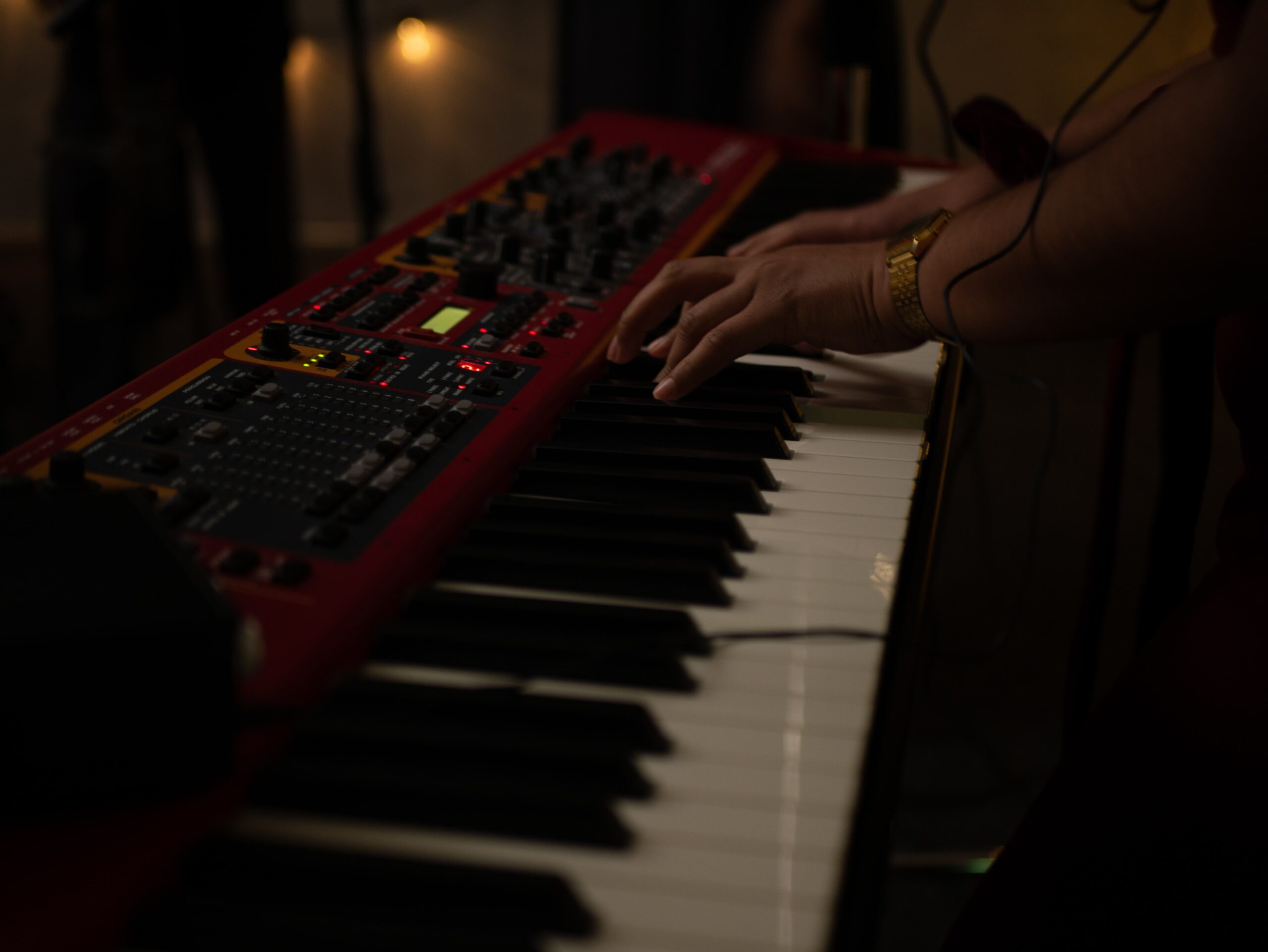The advance of piano technology over the past decade means we can use space more creatively.
As a result, there is a crossover in the functionality of keyboards and digital pianos.
Here we delve deeper into the differences between keyboards and digital pianos, helping you identify which best suits your musical requirements.
Digital Pianos
Their sole purpose is to replicate the performance of an acoustic grand piano. As well as mimicking the appearance, a digital piano aims to provide musicians with the same feel, quality of sound and full capability of a traditional alternative. In many respects it is a modern twist on a classic, allowing for improved portability and connectivity.
Digital pianos are perhaps a middle ground; they are much lighter than a grand piano, but heavier than a portable keyboard.
Weighing anywhere between 25 and 60lbs, a digital piano can come custom-built with a cabinet and have up to 88 keys. Depending on the model, they can feel almost indistinguishable to an acoustic piano with some using weighted keys.
Unlike portable electronic keyboards, digital pianos are more complex which makes them tricky to master if you haven’t previously played other digital models or an acoustic piano. Their more authentic weighted keys and sound does though prepare you to advance to an acoustic model after enough practice.
In terms of cost, digital pianos again fall between a keyboard and acoustic piano. They are often double, even triple, the price of an electronic keyboard. Digital pianos are more often priced from £250 through to £8,500. You can find an entry-level digital piano for about the same £250 price tag, but for the best tone and key action you’re probably looking for a digital piano that costs closer to £500 – £1000.
Electronic Keyboards
Electronic Keyboards are most often used as a stepping stone to learning how to play the piano. It is an ideal choice for a beginner seeking to become acquainted with piano keys. Unlike digital pianos, keyboards are not built with the intention of replicating the sound of an acoustic piano. Instead, they focus on producing a piano tone and offering portability.
Often weighing little more than 20lbs and containing between 49, 61 and 88 keys, Electronic Keyboards are easy to move around because they are lightweight. That also means they can be positioned on worktops, tables and floors with ease. They are simpler to store around the home too, unlike a digital or acoustic piano that needs both time and consideration before moving.
Keys on a keyboard are usually made of plastic and may not be appropriate for those after a more authentic feel and sound.
Sometimes they are considered ‘gimmicky’ because they come preloaded with artificial sounds, tones and songs, but those same functions can be a fun addition for children and beginners. From there they can learn the basics of playing the piano while practising the fundamental skills.
When it comes to the cost of electronic keyboards for adults, you can expect to pay anywhere between £100, for a basic model, to £4500 for an established brand. You can usually find a good and perfectly functional basic keyboard, and expect to pay about £250- £500.
There are stark differences between a digital piano and a keyboard, but arguably the biggest difference is the required skill level. Electronic Keyboards are without a doubt more suited to beginners and those wanting to understand the layout of a piano as well as the fundamentals of the instrument. In contrast, a digital piano is more difficult to master and is closer to an acoustic model in terms of both performance and sound.
If you would like more advice on pianos or keyboards, please feel free to drop into our piano showroom in London or call us at 0207 935 8682 to speak to a member of our friendly team.

